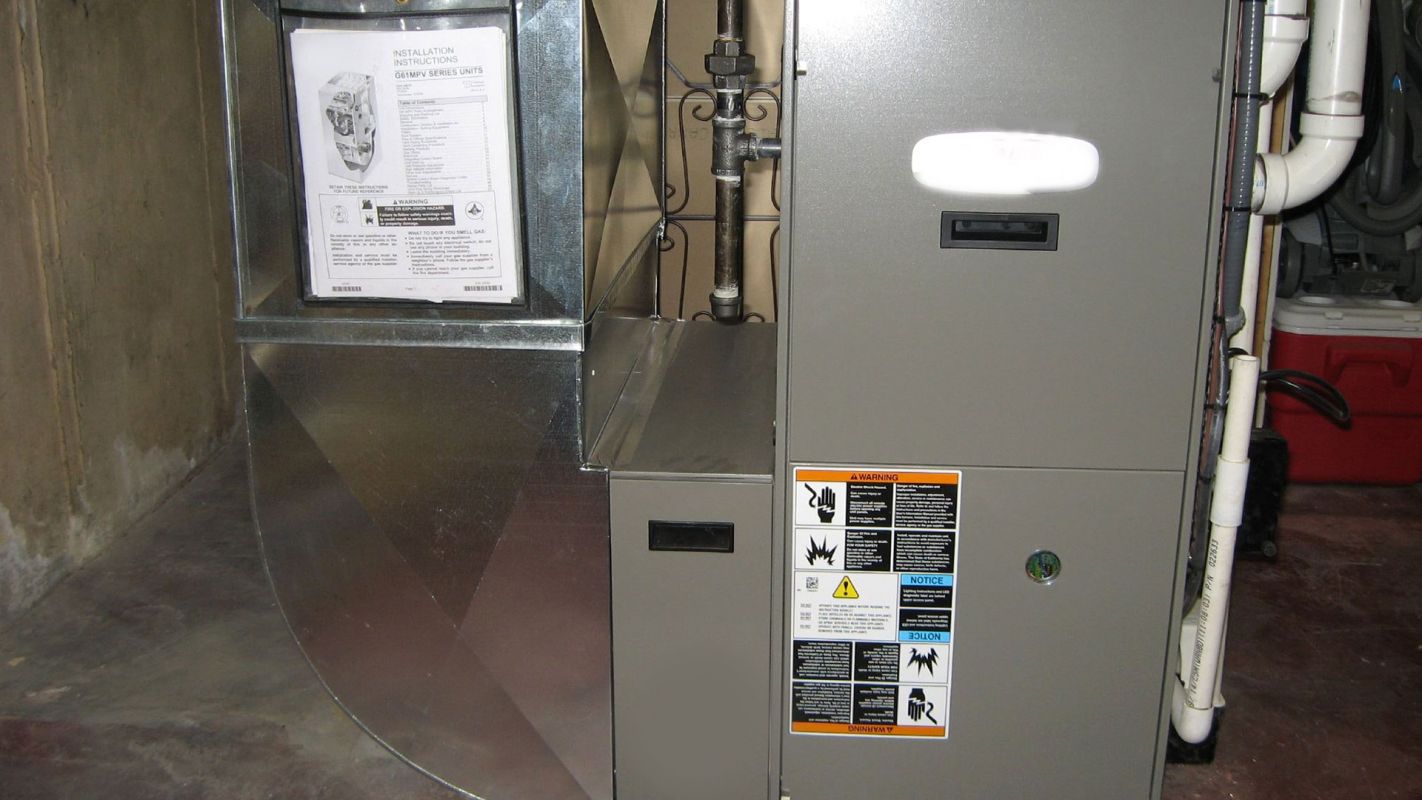When it comes to heating your home during those cold winter months or cooling it down on scorching summer days, you’re likely to encounter two common terms: furnaces and heat pumps. These heating and cooling systems play a pivotal role in maintaining a comfortable living environment year-round. In this article, we will delve into the world of furnaces and heat pumps, exploring their differences, benefits, and how they can help maximize your home comfort and energy efficiency.
Understanding Furnaces
Furnaces have been the go-to heating solution for homes across the United States for many years. They operate by burning fuel, such as natural gas or oil, to produce heat. Here’s how they work:
Combustion: In a furnace, combustion occurs within the unit. Natural gas or oil is ignited in a burner, producing a flame. This flame heats up a metal heat exchanger.
Heat Transfer: As the metal heat exchanger heats up, it transfers this heat to the air passing over it. This warm air is then distributed throughout your home via a system of ducts and vents.
Furnaces are known for their ability to provide rapid and intense heat, making them an ideal choice for extremely cold climates. They are efficient at raising indoor temperatures quickly and maintaining a cozy environment, especially in the dead of winter.
The Benefits of Furnaces
Efficiency: Modern furnaces are highly efficient, meaning they can heat your home effectively while consuming less fuel.
Cost-Effective: Natural gas furnaces, in particular, are often more cost-effective than other heating methods.
Quick Warm-Up: Furnaces excel at heating your home quickly, ensuring you don’t have to endure a chilly house for long.
Reliable: Furnaces are known for their durability and reliability, with many units lasting for 15-20 years with proper maintenance.
Understanding Heat Pumps
On the other hand, heat pumps are versatile heating and cooling systems that are gaining popularity for their energy efficiency and year-round functionality. Heat pumps work on a different principle than furnaces. They move heat from one place to another rather than generating it. Here’s how they work:
Heat Transfer: Heat pumps use a refrigeration cycle to transfer heat. In heating mode, they extract heat from the outside air or the ground (depending on the type) and transfer it inside.
Distribution: Once the heat is inside, the heat pump uses a fan to distribute it throughout your home. In cooling mode, the process is reversed, and the heat pump removes heat from inside and releases it outside.
Heat pumps are often considered the more environmentally friendly option as they don’t rely on burning fossil fuels. They are also energy-efficient, providing both heating and cooling in a single system.
The Benefits of Heat Pumps
Energy Efficiency: Heat pumps are known for their energy efficiency, as they can move heat rather than generate it. This can result in lower energy bills and reduced environmental impact.
Year-Round Functionality: Heat pumps can both heat and cool your home, making them a versatile choice for all seasons.
Environmentally Friendly: Heat pumps are more eco-friendly as they don’t produce greenhouse gas emissions from combustion.
Consistent Temperatures: Heat pumps provide a consistent and even temperature, eliminating hot or cold spots in your home.
Choosing Between a Furnace and a Heat Pump
So, which heating and cooling system is right for your home? The decision often depends on your specific needs and the climate in your area.
Consider a Furnace If:
- You live in a region with extremely cold winters. Furnaces are especially effective at quickly heating your home in freezing temperatures.
- You have access to cost-effective natural gas. Natural gas furnaces can be more economical in areas with affordable gas prices.
- You prefer a traditional heating system with a long track record of reliability.
Consider a Heat Pump If:
- You want a versatile system that provides both heating and cooling, eliminating the need for a separate air conditioner.
- You live in a moderate climate where temperatures don’t regularly drop below freezing.
- You’re concerned about the environmental impact and want an energy-efficient and eco-friendly heating and cooling solution.
- You want a system that provides consistent temperatures and eliminates hot or cold spots in your home.
Complementary Systems: Furnaces and Heat Pumps
In some cases, homeowners opt for a hybrid system that combines the benefits of both a furnace and a heat pump. This setup is known as a dual-fuel or hybrid system, and it can be a smart choice for those who want to maximize energy efficiency.
How a Dual-Fuel System Works:
In a dual-fuel system, the heat pump is the primary heating and cooling system. It operates efficiently during moderate weather. When temperatures drop significantly, the system automatically switches to the furnace to provide supplemental heating. This way, you get the best of both worlds – the energy efficiency of a heat pump and the heating power of a furnace when needed.
Maintaining Your Heating and Cooling System
Whether you choose a furnace, a heat pump, or a dual-fuel system, proper maintenance is essential to keep your system running efficiently and extend its lifespan.
Key Maintenance Tasks Include:
- Regular Filter Changes: Dirty filters can restrict airflow and reduce system efficiency.
- Annual Inspections: Schedule a professional inspection to ensure all components are in good working condition.
- Cleaning: Keep the system and its components clean to prevent dust and debris buildup.
- Lubrication: Lubricate moving parts to reduce friction and extend their lifespan.
- Thermostat Calibration: Ensure your thermostat accurately reflects your desired temperature.
- Duct Sealing: Leaky ducts can waste energy, so sealing them is crucial.
By maintaining your heating and cooling system, you can maximize its efficiency, lower your energy bills, and enjoy a comfortable home all year round.
The Bottom Line: Furnaces vs. Heat Pumps
In the battle of furnaces vs. heat pumps, there is no clear winner, as the best choice depends on your unique circumstances. Both systems offer distinct advantages and can provide efficient and effective heating and cooling. Ultimately, the decision should align with your climate, energy preferences, and long-term goals.
Consider consulting with a qualified HVAC professional to assess your home’s specific requirements and provide tailored recommendations. With their expertise, you can make an informed decision that ensures you stay comfortable while minimizing your energy costs and environmental impact.
In conclusion, when it comes to keeping your home cozy in the winter and cool in the summer, furnaces and heat pumps are two reliable and effective options. Furnaces are well-suited for extremely cold climates and are known for their quick warm-up times, while heat pumps provide year-round functionality, energy efficiency, and eco-friendliness. Your choice should be based on your specific needs and the climate in your area, as well as your environmental and cost considerations.





